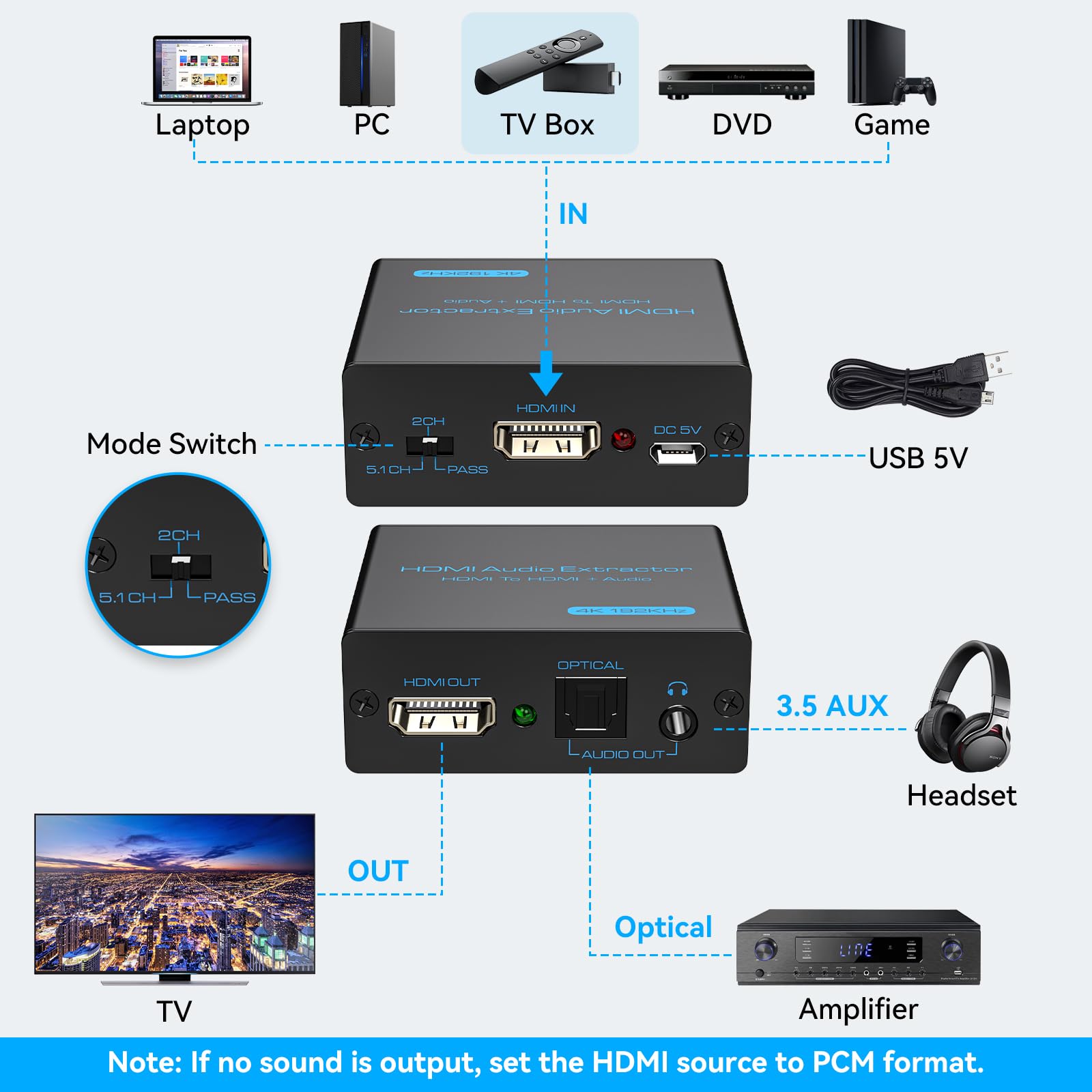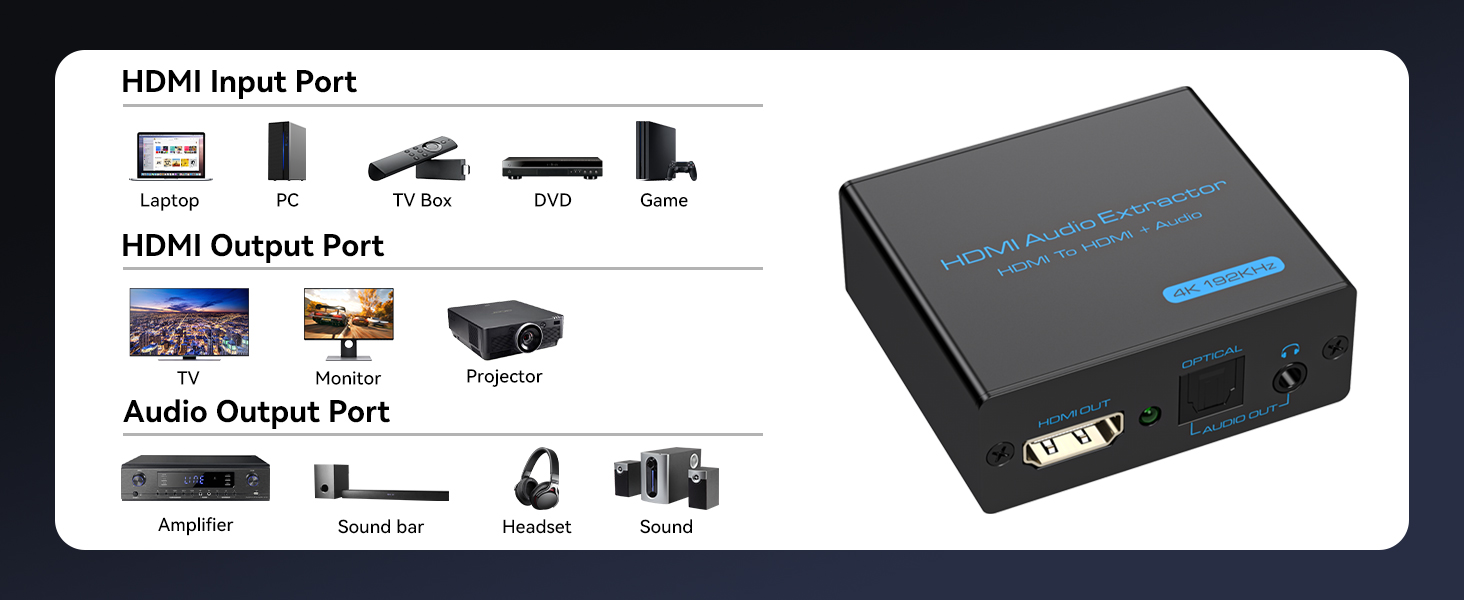Customer Services
Copyright © 2025 Desertcart Holdings Limited
Desert Online General Trading LLC
Dubai, United Arab Emirates








🎧 Elevate your AV game—extract, amplify, and dominate your home theater experience!
The VPFET HDMI Audio Extractor converts HDMI signals into high-quality optical or 3.5mm audio outputs, supporting 4K@30Hz video and HDCP 1.4. It offers three audio modes including 5.1 DTS surround sound, is USB-powered for low energy use, and is compatible with major devices like PS5, Fire TV, and Xbox, making it an essential tool for immersive multimedia setups.






Trustpilot
1 month ago
2 weeks ago